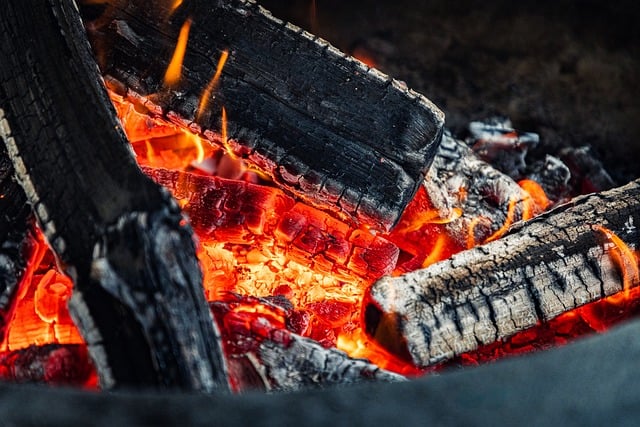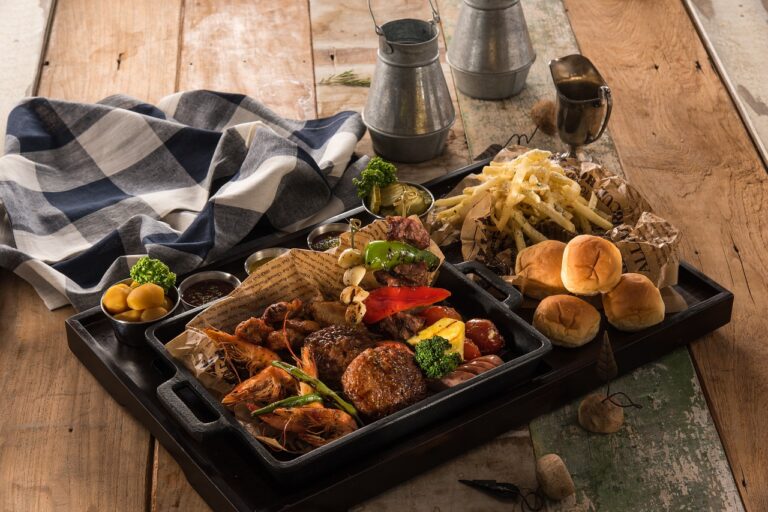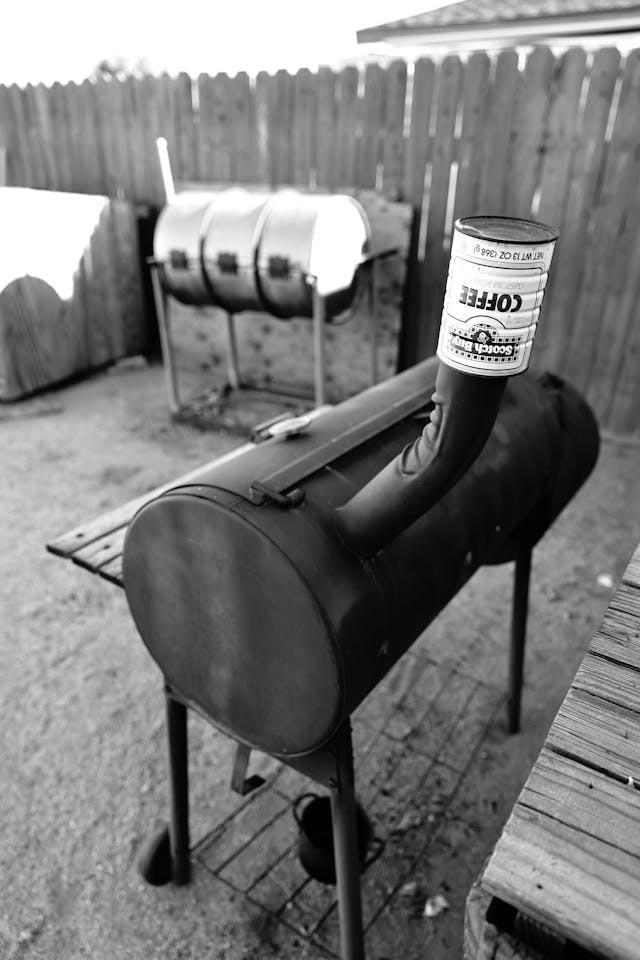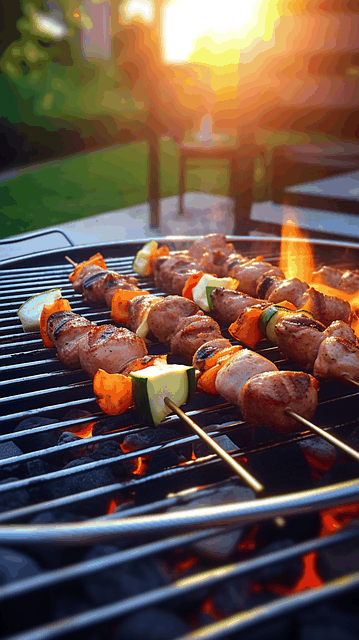15 Best and Most Reliable Offset Smokers with Side Firebox for Exceptional BBQ Flavor
Offset smokers with side firebox are a beloved tool for barbecue enthusiasts, known for their ability to provide a rich, smoky flavor through indirect heat. Among the different types of smokers, those with a side firebox are particularly popular. These smokers separate the heat source from the cooking chamber, allowing for slow, consistent cooking, ideal for larger cuts of meat.
While offset smokers with side fireboxe are often associated with professional pitmasters, they are accessible for beginners with the right knowledge and techniques. This guide will take you through everything you need to know to get started with an offset smoker with a side firebox. Offset smokers with side fireboxe operate by placing the heat source—charcoal, wood, or a combination—in a firebox attached to the side of the main cooking chamber.

This design creates indirect heat, which flows into the chamber and slowly cooks the meat without exposing it to direct flames. This method of slow cooking results in tender, flavorful meat with the signature smoky taste that makes barbecue so distinctive. However, controlling heat and maintaining a consistent temperature can be a challenge for first-timers.
In this guide, we’ll break down the key components of an offset smoker with a side firebox, cover essential techniques like fire management, temperature control, and using the right wood. We’ll also discuss common issues beginners face and how to troubleshoot them. Whether you’re smoking your first brisket or looking to refine your barbecue skills, this article will help you confidently use your offset smoker with a side firebox.
1. What Is an Offset Smoker with a Side Firebox?
An offset smoker with a side firebox is a type of smoker where the firebox is positioned to the side of the cooking chamber, allowing heat and smoke to flow indirectly into the cooking area. This setup is ideal for slow-cooking large cuts of meat. The separation of the firebox and cooking chamber ensures that food is exposed to smoke and heat without the risk of burning from direct flames. The result is a more controlled cooking environment.
2. How Offset Smokers with Side Fireboxe Work
The side firebox generates heat and smoke, which travels through a small opening into the main cooking chamber. This indirect heat cooks the meat slowly, while the smoke adds flavor. Adjusting the airflow between the firebox and cooking chamber is critical for maintaining steady temperatures. This process involves careful monitoring and tweaking of dampers.
3. Types of Fuel for Side Firebox Offset Smokers

Offset smokers with side fireboxe can use a variety of fuel sources, including charcoal, wood, or a combination of both. Provides consistent, steady heat, making it ideal for temperature control. Adds more flavor but requires more attention as it burns hotter and faster than charcoal.
4. Choosing the Right Offset Smoker with a Side Firebox
When purchasing an offset smoker with a side firebox, look for key features like sturdy construction, thick metal, and adjustable dampers. Thicker metal helps retain heat, ensuring more consistent cooking temperatures. A well-sealed lid prevents heat and smoke from escaping. If you plan to cook for large groups, opt for a smoker with a larger cooking surface.
5. Preparing Your Offset Smoker with a Side Firebox
Before your first cook, it’s essential to season the smoker. This involves coating the inside with oil and heating it to create a protective layer, which helps prevent rust and improves heat retention. Light a fire in the side firebox and let it burn for a few hours at moderate heat. This step removes any manufacturing residues and ensures your smoker is ready for use.
6. Building a Fire in the Side Firebox
A good fire is essential for successful smoking. Start by lighting charcoal in a chimney starter and then transfer it to the firebox. Gradually add wood chunks to maintain a consistent temperature. Use dry, seasoned wood to avoid excessive smoke or an overpowering flavor. Once the fire is burning steadily, adjust the airflow to stabilize the heat.
7. Managing Airflow and Dampers
Dampers control the amount of oxygen that enters the firebox, which in turn affects the fire’s intensity and the smoker’s temperature. The intake damper on the firebox regulates oxygen flow, while the exhaust damper lets smoke out. Keep the exhaust damper fully open to allow smoke to escape and prevent creosote buildup, which can give the meat a bitter flavor. Use the intake damper to regulate the fire’s heat.
8. Using a Water Pan for Moisture and Temperature Control
Placing a water pan inside the cooking chamber helps add moisture to the environment, which prevents the meat from drying out during long cooking sessions. It also helps regulate temperature. Fill the water pan halfway with warm water and place it directly under the meat. The water will evaporate, keeping the chamber humid and stabilizing the heat.
9. Monitoring the Temperature

One of the most challenging aspects of using an offset smoker with a side firebox is maintaining a consistent temperature.Keep an eye on the internal temperature of the meat and the smoker using a digital thermometer. Aim for a cooking temperature of 225°F to 275°F. Avoid opening the smoker lid frequently, as this can cause heat loss and prolong cooking time.
10. Choosing the Best Meats for Smoking
Offset smokers with side fireboxes are perfect for smoking large cuts of meat like brisket, ribs, pork shoulder, and whole chickens. These meats benefit from low-and-slow cooking, which breaks down collagen and creates tender, juicy results. When smoking, larger cuts require longer cook times, so plan for 8 to 12 hours of cooking depending on the size of the meat and the desired doneness.
11. Using the Right Wood for Smoking
Hardwoods like oak, hickory, mesquite, and pecan are great for smoking because they burn hotter and longer than softwoods. Oak and hickory are versatile and pair well with a variety of meats, while mesquite provides a stronger, more intense flavor. For a milder flavor, try fruitwoods like apple or cherry.
12. Rotating and Positioning Meat in the Cooking Chamber
The side of the cooking chamber closest to the firebox is hotter, so it’s important to position the meat correctly to ensure even cooking. Rotate the meat every few hours for the best results. Place larger cuts of meat farther from the firebox to prevent overcooking. Thinner cuts or items that cook faster can be placed closer to the firebox.
13. Troubleshooting Common Issues
Beginners often face challenges like maintaining temperature or dealing with too much or too little smoke. Common issues include fluctuating heat, creosote buildup, or drying out the meat. If your smoker temperature drops too quickly, add more fuel in small amounts. If there’s too much smoke, open the intake damper to allow more air into the firebox, which will help the fire burn cleaner.
14. Cleaning and Maintaining Your Offset Smoker with Side Firebox
After each use, clean out the ashes from the firebox and wipe down the grates to prevent rust and grease buildup. Regular cleaning helps ensure a longer life for your smoker. Season the smoker occasionally by wiping it down with oil and heating it to prevent rusting. If there’s buildup on the cooking grates, use a stiff wire brush to scrape it off.
15. Experimenting with Recipes
Once you’ve mastered the basics of using your offset smoker with a side firebox, try experimenting with different meats, marinades, rubs, and wood combinations to create new flavors. Start with classic recipes like smoked brisket or pulled pork, then branch out into more creative dishes like smoked sausages, turkey, or even smoked vegetables for variety.
Conclusion
Offset smokers with side fireboxes are a powerful and versatile tool for anyone serious about mastering the art of smoking. While they require more hands-on management than other types of smokers, the control they provide over the cooking process is unmatched. By carefully managing airflow, maintaining consistent temperatures, and choosing the right fuel, you can produce tender, flavorful meats with that signature smoky taste.
It’s a rewarding experience that transforms simple ingredients into mouth watering barbecue dishes. As with any craft, the more you practice, the better you’ll become at using your offset smoker. Over time, you’ll learn to anticipate temperature changes, adjust your fire, and tailor your smoking techniques to the type of meat you’re cooking.
With the right combination of patience, skill, and experimentation, you’ll be able to consistently produce amazing smoked meals that your friends and family will enjoy. As you grow more comfortable with your smoker, you’ll be able to experiment with different wood types, rubs, and techniques to develop your unique style of barbecue. Whether you’re preparing brisket for a weekend gathering or experimenting with new recipes, offset smokers with side fireboxes give you the tools to create truly memorable meals that celebrate the art of slow-cooked, smoked food.






